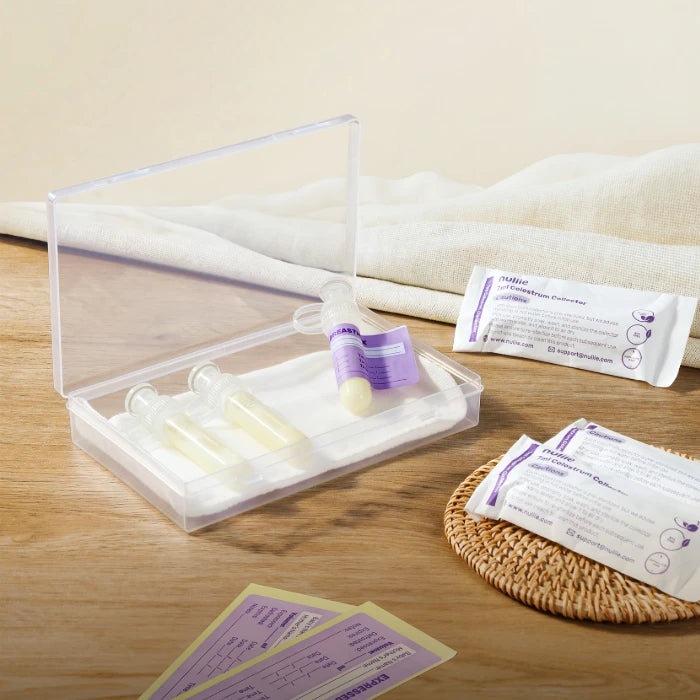Learn how microwave steam sterilizers make baby bottle cleaning quick and safe, protecting your infant from bacteria effectively.
The Importance of Sterilization
Babies are risky of contracting any virus and infections. Their bodies are still vulnerable to any diseases. That’s why as parents, we must prioritize their safety every time we give them food to take.
Sterilize all things as possible. It’s important that any bacteria are killed even before the baby uses anything like a milk bottle or toys. There are several suggested tools and gadgets online but microwave steam sterilizers are the best option.
Here you will understand the definition, the importance of sterilization, and the right time to sterilize baby things. We comprehensively added the advantages and disadvantages of different methods of sterilization.
Are you ready to give your baby a carefree feeding journey? No more pains, stomach aches, or heartaches. For as long as you stick with the tips that we’re going to provide, you can be free from further stress of taking care of your little bundle of joy.
 Sterilization Defined
Sterilization Defined
It is the process of eliminating bacteria in anything like a baby bottle. This process is very important to keep your baby safe from any harmful microorganisms that make your baby sick. Keep your baby safe from bacteria, viruses, parasites, and pathogens.
Babies are still vulnerable to these. They have weaker immune systems than adults. It’s weak enough to fight against any virus or easily catch any diseases.
There are many ways to ensure your baby is safe from illness. Make sure that any feeding materials like bottles are properly sterilized.
As the baby grows older, you have to sterilize bottles, nipples, and anything else that goes into their hands. Milk grows pathogens in the unsterilized bottles. This gives a high potential of making your baby sick. Cleaning is different from disinfecting and sterilizing.
Cleaning is merely removing foreign particles like milk or dirt. Disinfecting is the process of destroying and removing pathogenic microorganisms from the surface of items like a baby’s bottle and pacifier.
Sterilizing Baby Bottles
Every time you use a baby bottle, it must be prepared and sanitized even before the formula or breastmilk is filled in. You can also sterilize them in advance.
Any feeding tools or equipment must be sterilized. It includes baby bottles and components like collars, nipples, lids; and the pacifier. In pumping breastmilk, you should sterilize the breast milk pump components.
BPA-Free – Bisphenol-A (BPA) is a synthetic organic compound commonly found on hard plastic containers. In January 2010, the U.S. Food and Drug Administration found out that BPA affects the human brain. It also affects our behavior, prostate glands in fetuses, and young children.
That’s why when sterilizing the baby bottle in the microwave, be sure you’re using a BPA-free tool. Glass bottles are the best choice. However, avoid using hard, clear, inflexible plastic bottles.
Extreme Heat – You can sterilize with microwaves. They reach very high temperatures. It takes five to eight minutes before the temperature increases. Don’t remove the lid because you might get a burn from the steam.
When it’s time to remove the lid, do it carefully. Cool the bottles after sterilization. It takes two minutes before you can remove the sterilizer from the microwave.
Hold the sterilizer evenly. You don’t want to hurt yourself in this process. As much as possible, avoid spilling any hot water.
Fire Hazard – Be careful in microwaving sterilizers. Carefully put water at the bottom. Check on the manufacturer’s guidelines.
After a couple of minutes, the water will turn into steam. This sterilizes the baby bottles. Be sure to add enough water because it may cause your sterilizer to melt. Thus, it will catch fire.
Foreign Objects – Keep any objects away from the microwave, especially made out of metals. It will cause a reaction when put inside the microwave. It will cause the microwave to spark.
When it sparks, there is a tendency your sterilizer will be destroyed and cause a fire. Always keep your microwave safe.
Accessibility – Not everyone has an access to a microwave. But, it’s considered convenient to use. It leaves no mess throughout your process for as long as performed safely.
Although when you travel, you can’t bring a microwave with you. It’s bulky and more hassle. You might want to use other methods of sterilizing your bottles.
Specific Sizing– Sterilizer designs are made for specific bottle types. Check on your bottle stocks before buying the sterilizer.
Manufacturers provide safety instructions for us to follow. For example, it doesn’t allow overloading of the sterilizer. They also would suggest for us to seal the unit properly in keeping them.
If you to sterilize more items, you can divide them into two loads. Don’t stuff everything in one session. Considering the size of your bottle, do not use your current sterilizer if the bottle is way bigger.
Different Baby Bottles Sterilization Methods
In sterilizing baby tools, you may use any of the following methods. Each one has a definition. We also prepared the steps on how to do them.
Every mother has her own style. Read about the pros and cons of each method to finally decide which method you’d like to practice next.
Boiling
This is legendary. This is the widely used common method of sterilizing baby bottles. To boil your baby bottles by boiling, here are steps you can observe and follow.
1. Always start with checking the manufacturer’s guidelines. It’s safe enough to know if your bottles are safe to sterilize.
2. Put the items into a large pot and fill it will water. Make sure everything is submerged. Check if there’s no bubble inside the bottles.
3. Boil for 10 minutes.
4. Leave the items in the pot until ready for use. Cool the water first before removing the bottles so you won’t burn yourself.
5. Repeat this process if the bottles aren’t used within 24 hours from boiling.
Pros – It’s a cheap and easy method. There’s no need for you to buy special equipment because pots and stoves are found at home.
Cons – Because of repeating the process, there are baby tools like nipples that degrade faster. This method is a bit time-consuming. It’s not automatic so you can’t leave it unattended.
There will still be a risk of burning yourself or someone else near your stove. You have to prepare several things like a pot with cover and baby bottle thongs during the process.
Steaming (Microwave)
This is the second method we’re going to share with you. Steaming is the method of sterilizing baby bottles safely using steam (heat). Look for the best sterilization units. They will give you the best results.
Again, check on the manufacturer’s instructions. There is the correct power setting for microwaves. Follow it carefully to avoid melting baby bottles or nipples.
Position the bottles with their openings facing downward the sterilizer. Place inside the sterilizing unit once you don’t use the sterilized items immediately. Make sure they are sealed.
Putting your baby feeding equipment directly into your microwave would likely damage them.
Other types of bottle sterilizers
Pros – Sterilization is a quick method. There are microwave steamers that are affordable.
Cons – Be mindful of other baby feeding equipment because not all can be microwaved. To sterilize more items, you have to do them in batches which could be time-consuming.
You have to add enough water to avoid melting bottles and catching fire. Although convenient to use, microwave sterilizers are bulky.
Takeaway
Babies are delicate of acquiring disease because of improper hygienic practices. There are many illnesses acquired from food handling to babies. Their safety must be the parents’ top priority.
Sterilization is the process that helps parents best in making sure their kids are safe from any bacteria and viruses present on unhygienic feeding tools. It’s recommended to sterilize the baby bottles before usage.
There are different sterilization methods that parents can choose from. Boiling is the most basic sterilization method for baby bottles. On the other hand, parents can prefer using microwave bottle sterilizers than can be sourced from online stores.
Boiling is very familiar to any household. You can just use water and a pot in boiling your baby bottles. The downside is the hassle of preparing all the stuff before you could finally sterilize.
Using a microwave in sterilizing the baby’s feeding stuff makes it convenient. Microwaves are made available in the market. But, not all can afford to have one at home.
Choose the microwave bottle sterilizer that is portable, can hold as many bottles as you want, is a space-saver, and easy-to-use.
The bottom line, microwave bottle sterilizers are safe. As long as you use it right and get rid of harmful materials inside the microwave while using it, you got no problem at all.





Leave a comment
This site is protected by hCaptcha and the hCaptcha Privacy Policy and Terms of Service apply.